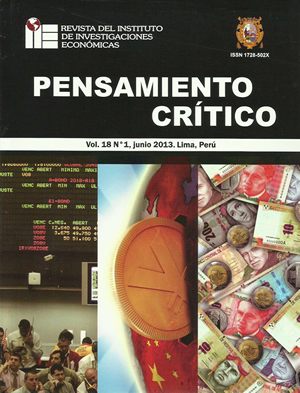Algunas notas a considerar en el análisis monetario de los ciclos económicos
DOI:
https://doi.org/10.15381/pc.v18i1.8920Keywords:
Economic cycles, interest rates, credit expansion, booms, depressions.Abstract
This article describes the monetary explanations of business cycles, considering that credit expansion occurs through excessive monetary base and hence excessive bank lending. The obstacles encountered by the monetary explanation of the cyclical crises are theoretical and political. The constant ups and downs of economic activity, and the inevitable sequence of booms and busts, are effects caused by repeated attempts to reduce the interest by credit expansion. Inevitably the final collapse of the boom generated by credit expansion. One can only cause soon choose between ending the crisis credit expansion, or let the monetary system crisis occurs a little later. On the monetary explanation of economic cycles and banks BCR considered pernicious interest level determined by the market, so it should cause a reduction of interest by credit expansion. This measure will lead to economic cycles. Thus, the 1992-2012 period reflected a continued economic progress and again interrupted by booms and busts. The statistics reflect these fluctuations contrary to the general trend toward a continued increase in investment and a constant increase in production.Downloads
Published
Issue
Section
License
Copyright (c) 2013 Pablo Rivas Santos

This work is licensed under a Creative Commons Attribution-NonCommercial-ShareAlike 4.0 International License.
THE AUTHORS RETAIN THEIR RIGHTS:
a. The authors retain their trademark and patent rights, and also on any process or procedure described in the article.
b. The authors retain the right to share, copy, distribute, execute and publicly communicate the article published in Pensamiento Crítico (for example, place it in an institutional repository or publish it in a book), with recognition of its initial publication in Pensamiento Crítico.
c. The authors retain the right to make a subsequent publication of their work, to use the article or any part of it (for example: a compilation of their works, notes for conferences, thesis, or for a book), provided they indicate the source of publication (authors of the work, journal, volume, number and date).






